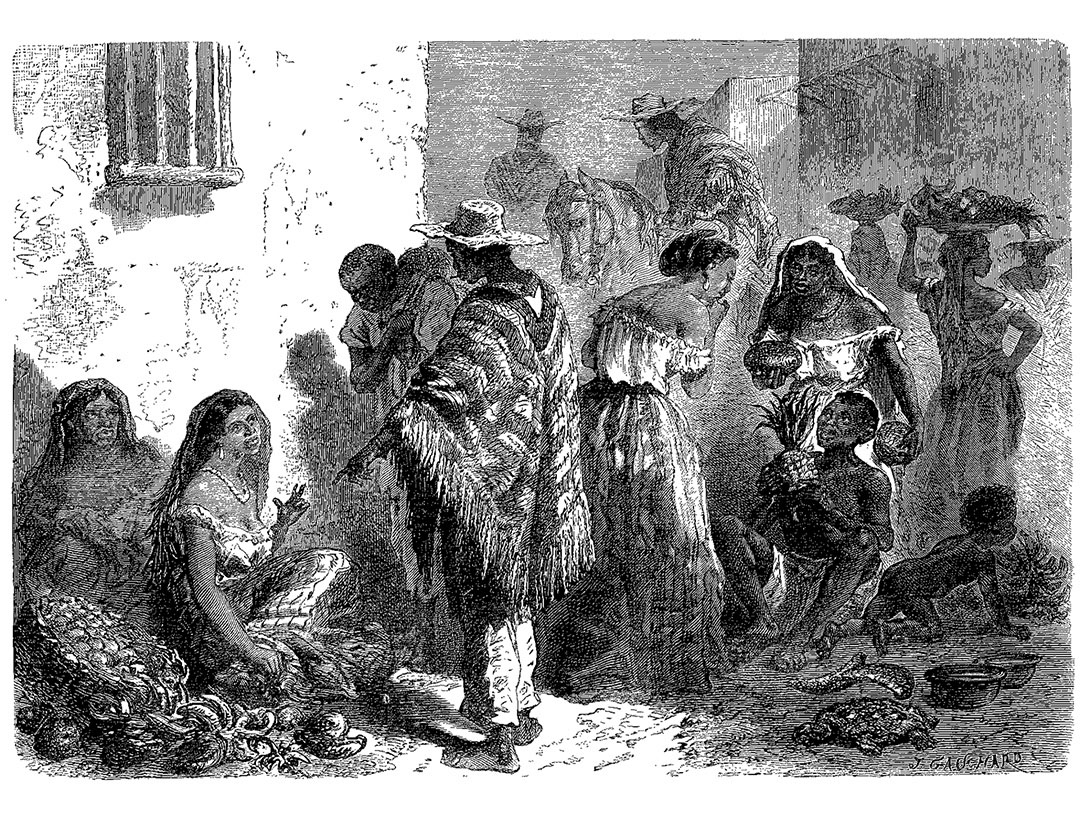PALIMPSESTS
Spaces
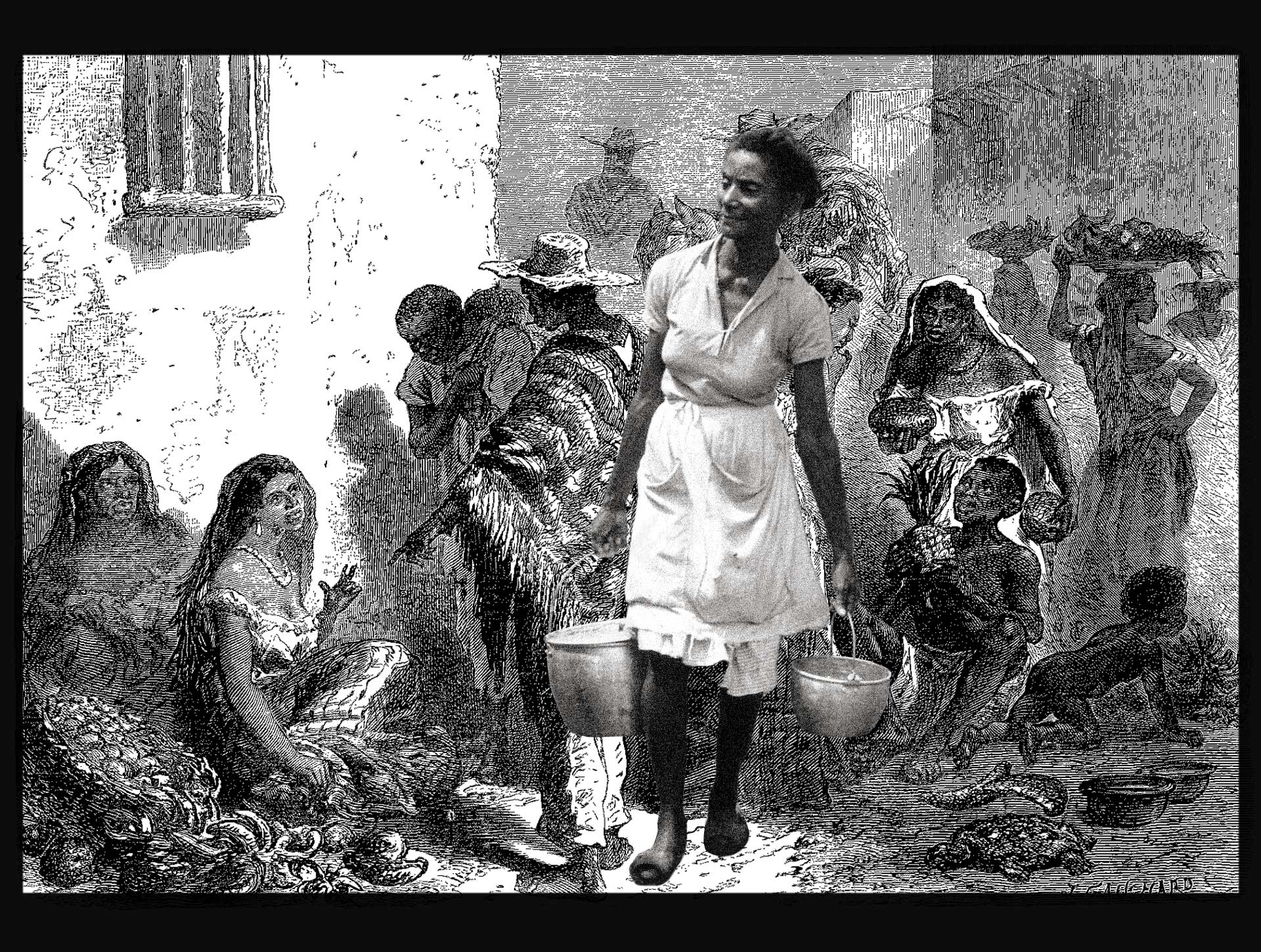
Markets
by Nohora Arrieta
A palimpsest on markets as spaces of Black sociability
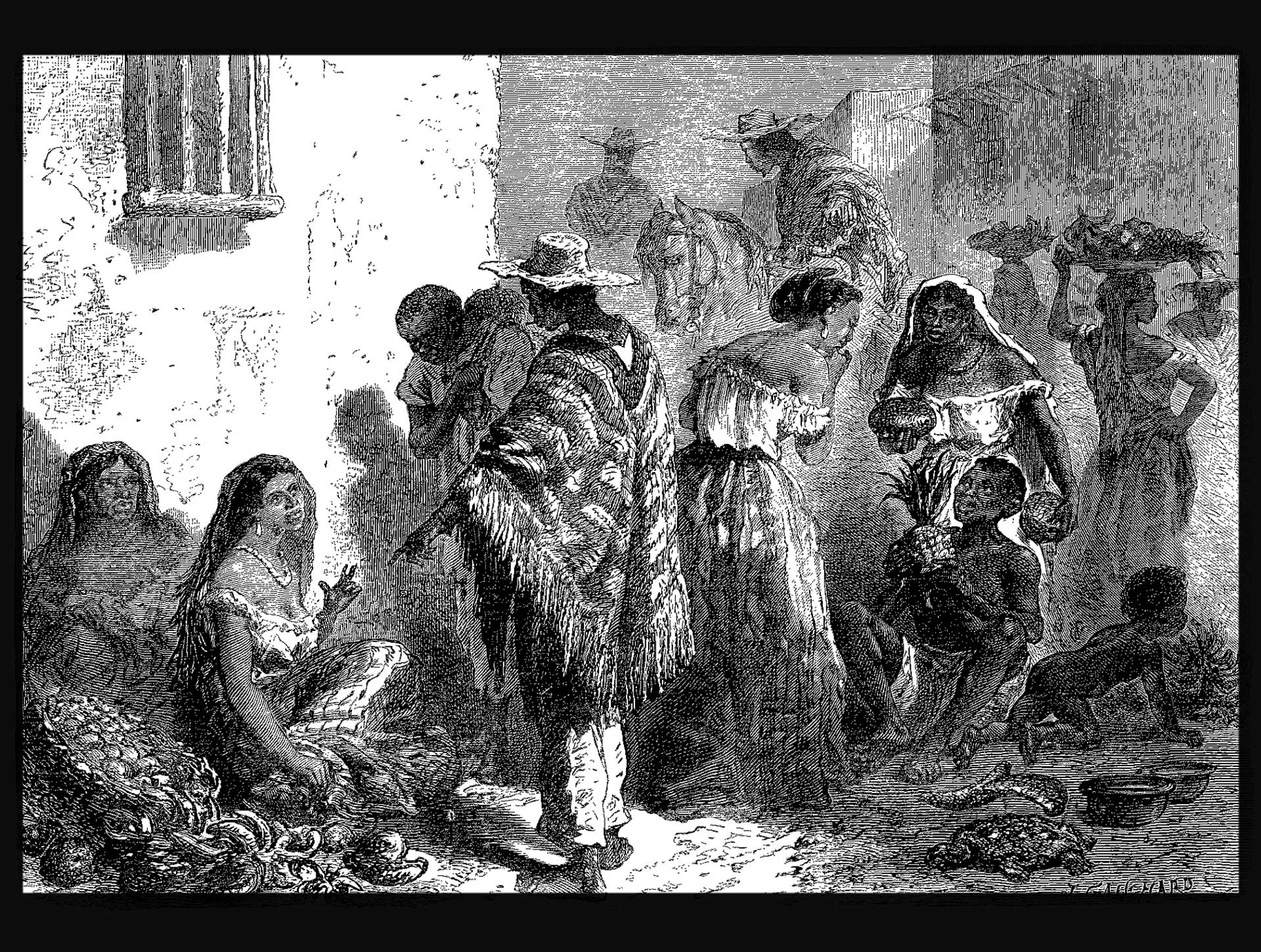
In 1869, the French physician Charles Saffray traveled through Nueva Granada, present-day Colombia. Shortly after, between 1872 and 1873, he published his “Voyage à la Nouvelle Grenade” in the magazine Le Tour du Monde. His account is comprised of texts and engravings made by A. de Neuville based on Saffray’s sketches. One of them, Marché à Carthagène [Market in Cartagena], is a market scene featuring mostly Black characters, which conveys a bustling energy.
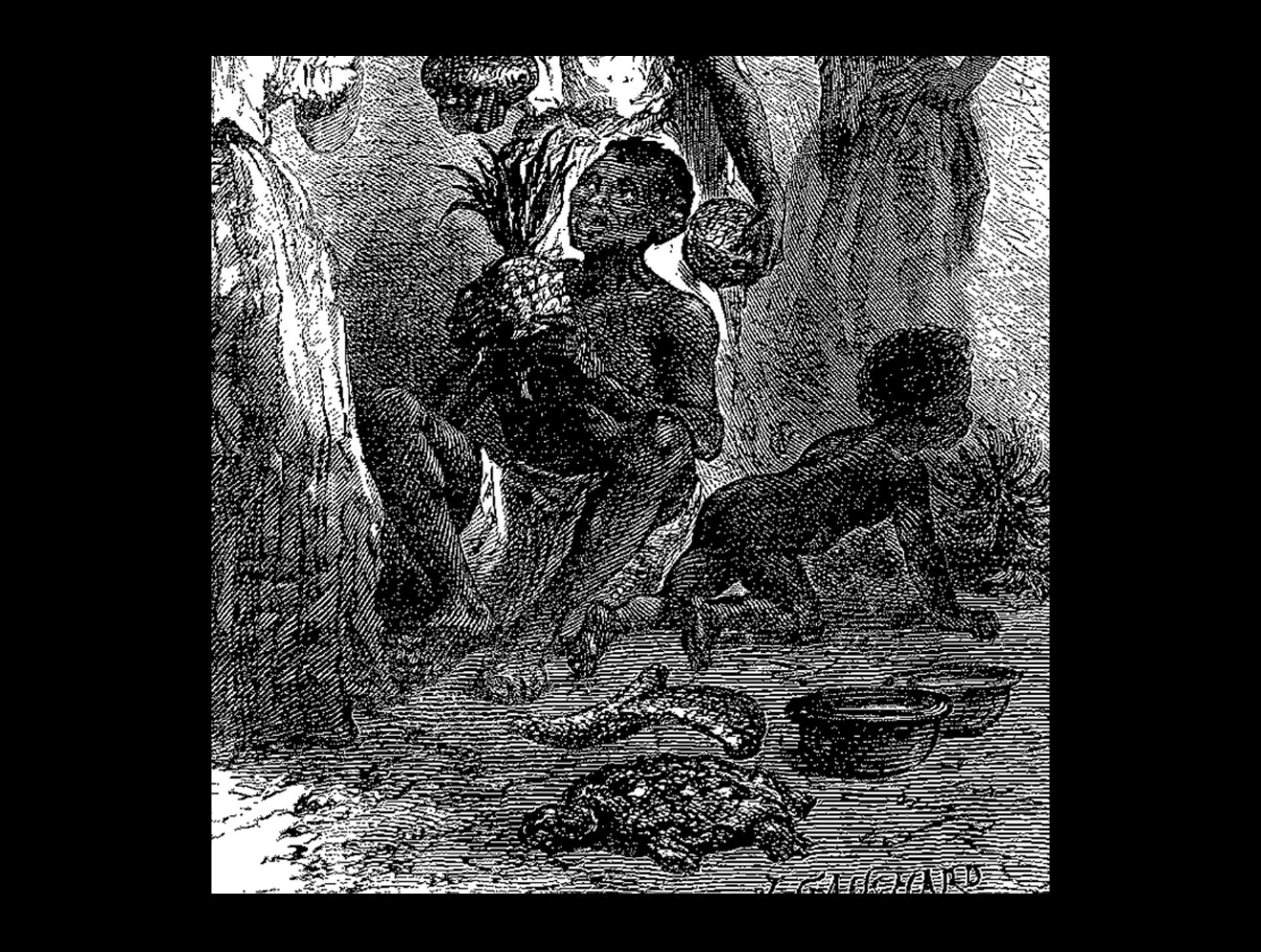
Black women wear long skirts and blouses that bare their shoulders, and some carry trays of fruit on their heads. Vendors seated on the ground carefreely offer their products to potential buyers, while the poor hygiene of the place is underlined by a Black child crawling naked close to an apparently dead turtle and a shirtless Black salesman.

The sense of action and movement is further conveyed by the ambiguous interaction between the figures at the lower left of the image, where a mixed-race woman is involved in a transaction with a barefoot Black man, under the wary gaze of an older Afrodescendent woman in the shadows. What is the nature of their interaction? Are they discussing the price of produce or something else?

Public markets are intimately related to the history of Black people in the Americas. While certain kinds of markets served as sites where enslaved people were sold as merchandise, others functioned as spaces of sociability. The latter were places where both free and enslaved Afrodescendants procured alternative means of survival and imagined the possibility of freedom. In contemporary times, representations of public markets continue to be sites of racialized disputes in some predominantly Black cities.

In Cartagena de Indias, Colombia’s most touristic city, for example, the market is often represented as a predominantly Black, popular, and energetic space. In 1969—exactly a century after Saffray’s trip—the American photographer Harrison Foreman took pictures of Mercado del Arsenal for the American Geographical Society. This market, located in Getsemaní (in Cartagena’s colonial downtown) is populated by Black working-class people. As in Saffray’s engraving, this image shows the waste-covered ground where vendors place their products and conduct their transactions.
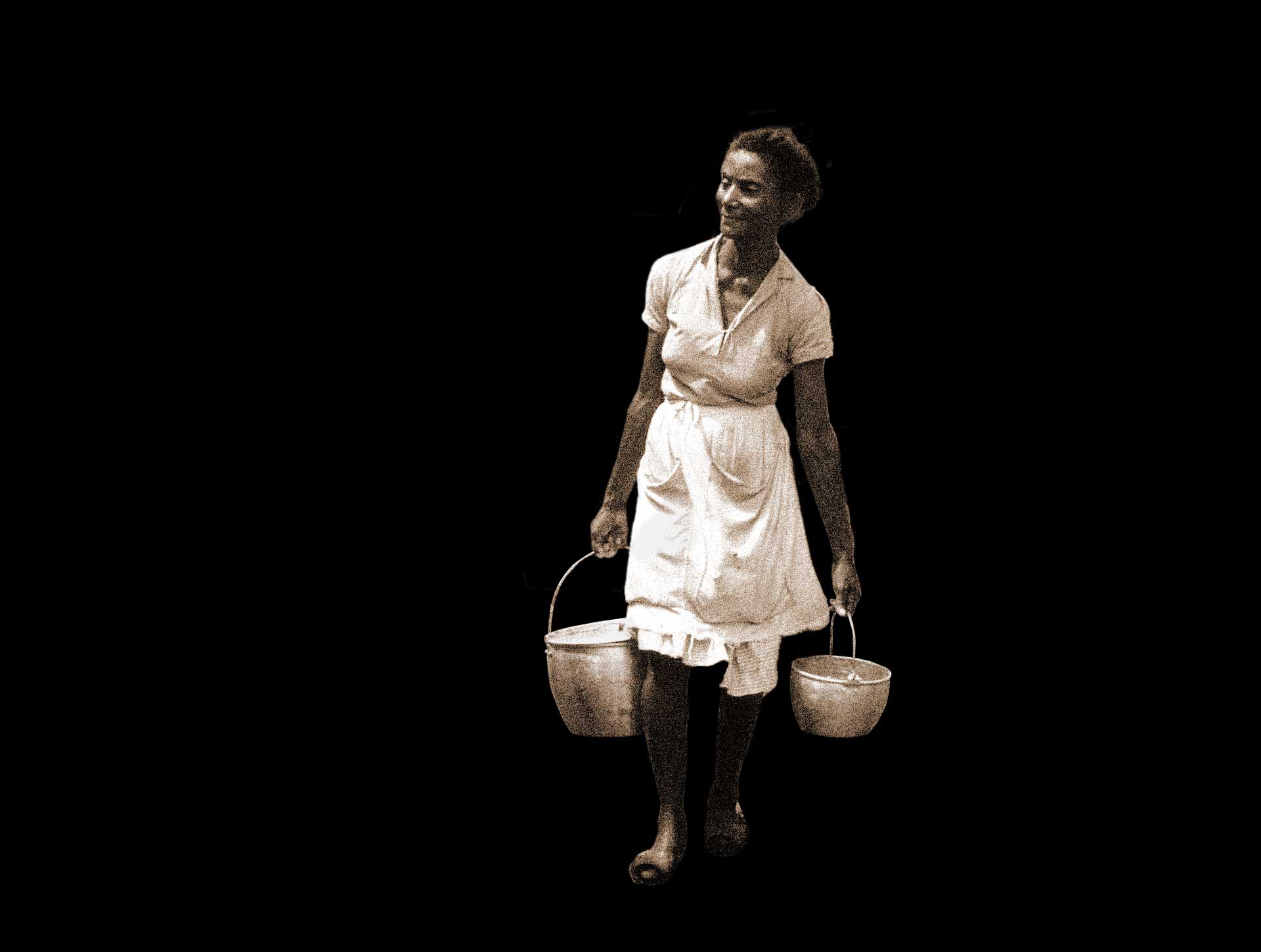
At its center, there is a Black woman wearing an apron. She carries two big pots, probably filled with food prepared at home for sale. She looks around, perhaps searching for buyers. In her reserved smile and sideways glance, one can perceive the centuries-long resoluteness of those who inhabit a space that they recreate daily through their own practices and actions.

When Cartagena’s elites decided to project the city as a tourist destination, the Mercado del Arsenal was moved out of Getsemaní in 1978. The waste and the “kind” of people that inhabited the market were anathema to the socially decontextualized “colonial paradise” that the tourist industry aimed to portray. ■

Markets
by Nohora Arrieta
A palimpsest on markets as spaces of Black sociability

In 1869, the French physician Charles Saffray traveled through Nueva Granada, present-day Colombia. Shortly after, between 1872 and 1873, he published his “Voyage à la Nouvelle Grenade” in the magazine Le Tour du Monde. His account is comprised of texts and engravings made by A. de Neuville based on Saffray’s sketches. One of them, Marché à Carthagène [Market in Cartagena], is a market scene featuring mostly Black characters, which conveys a bustling energy.

Black women wear long skirts and blouses that bare their shoulders, and some carry trays of fruit on their heads. Vendors seated on the ground carefreely offer their products to potential buyers, while the poor hygiene of the place is underlined by a Black child crawling naked close to an apparently dead turtle and a shirtless Black salesman.

The sense of action and movement is further conveyed by the ambiguous interaction between the figures at the lower left of the image, where a mixed-race woman is involved in a transaction with a barefoot Black man, under the wary gaze of an older Afrodescendent woman in the shadows. What is the nature of their interaction? Are they discussing the price of produce or something else?

Public markets are intimately related to the history of Black people in the Americas. While certain kinds of markets served as sites where enslaved people were sold as merchandise, others functioned as spaces of sociability. The latter were places where both free and enslaved Afrodescendants procured alternative means of survival and imagined the possibility of freedom. In contemporary times, representations of public markets continue to be sites of racialized disputes in some predominantly Black cities.

In Cartagena de Indias, Colombia’s most touristic city, for example, the market is often represented as a predominantly Black, popular, and energetic space. In 1969—exactly a century after Saffray’s trip—the American photographer Harrison Foreman took pictures of Mercado del Arsenal for the American Geographical Society. This market, located in Getsemaní (in Cartagena’s colonial downtown) is populated by Black working-class people. As in Saffray’s engraving, this image shows the waste-covered ground where vendors place their products and conduct their transactions.

At its center, there is a Black woman wearing an apron. She carries two big pots, probably filled with food prepared at home for sale. She looks around, perhaps searching for buyers. In her reserved smile and sideways glance, one can perceive the centuries-long resoluteness of those who inhabit a space that they recreate daily through their own practices and actions.

When Cartagena’s elites decided to project the city as a tourist destination, the Mercado del Arsenal was moved out of Getsemaní in 1978. The waste and the “kind” of people that inhabited the market were anathema to the socially decontextualized “colonial paradise” that the tourist industry aimed to portray. ■


